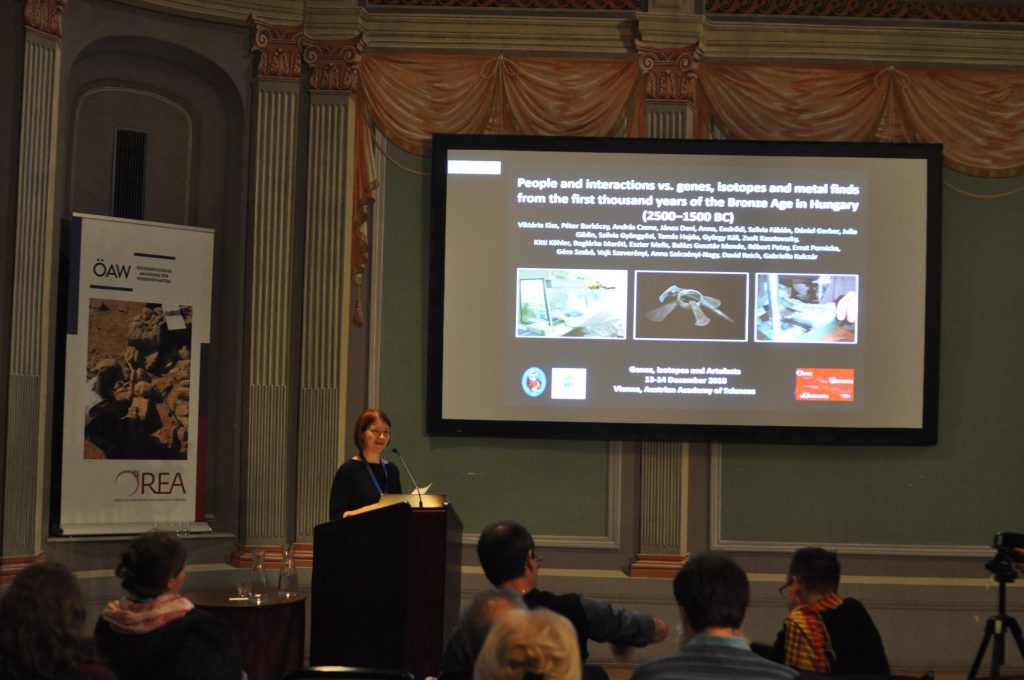Mobility in Bronze Age Hungary – video presentation in English
Among other lectures presented at the international conference on 13-14th December 2018, Vienna, the recorded presentation of our research group is finally available at the YouTube channel of the Institut für Orientalische und Europäische Archäologie (OREA Institute) of the Austrian Academy of Sciences.
The meeting entitled Genes, isotopes and artefacts – How should we interpret the movements of people throughout Bronze Age Europe? was jointly funded by the OREA Institute and the Ex-Space (Marie Sklodowska-Curie) project of the Durham University, and was organized by Claudio Cavazzuti, Katharina Rebay-Salisbury and Ben Roberts. Archaeologists, geneticists, anthropologists, linguists and specialists of further disciplines from leading Eurasian Bronze Age research groups were invited to the interdisciplinary consultation.
Our presentation titled People and interactions vs. genes, isotopes and metal finds from the first thousand years of the Bronze Age in Hungary (2500-1500 BCE) covers the summary of two consecutive periods (Early Bronze Age: 2500-2200 BC, Middle Bronze Age: 2000-1500 BC), based on the most recent compositional and lead isotope studies of copper and bronze artefacts, as well the latest bioarcheological (archaeological, physical anthropological, aDNA and stable isotope) analyses of human remains from burials discovered in Hungary. The results indicate significant mobility in both periods.









